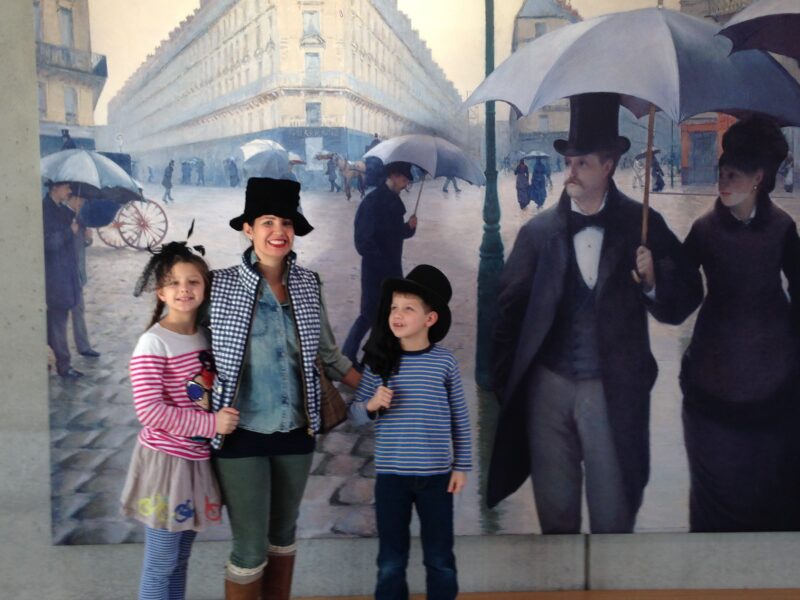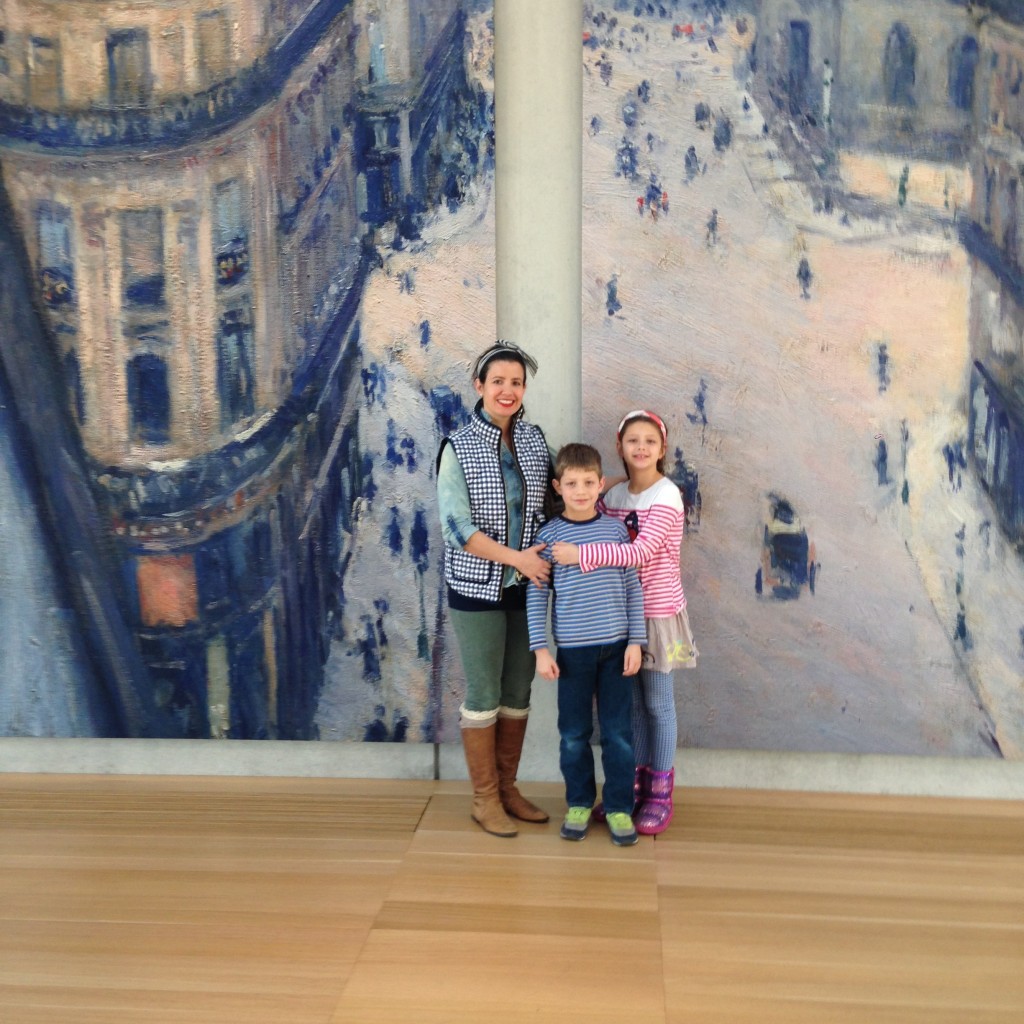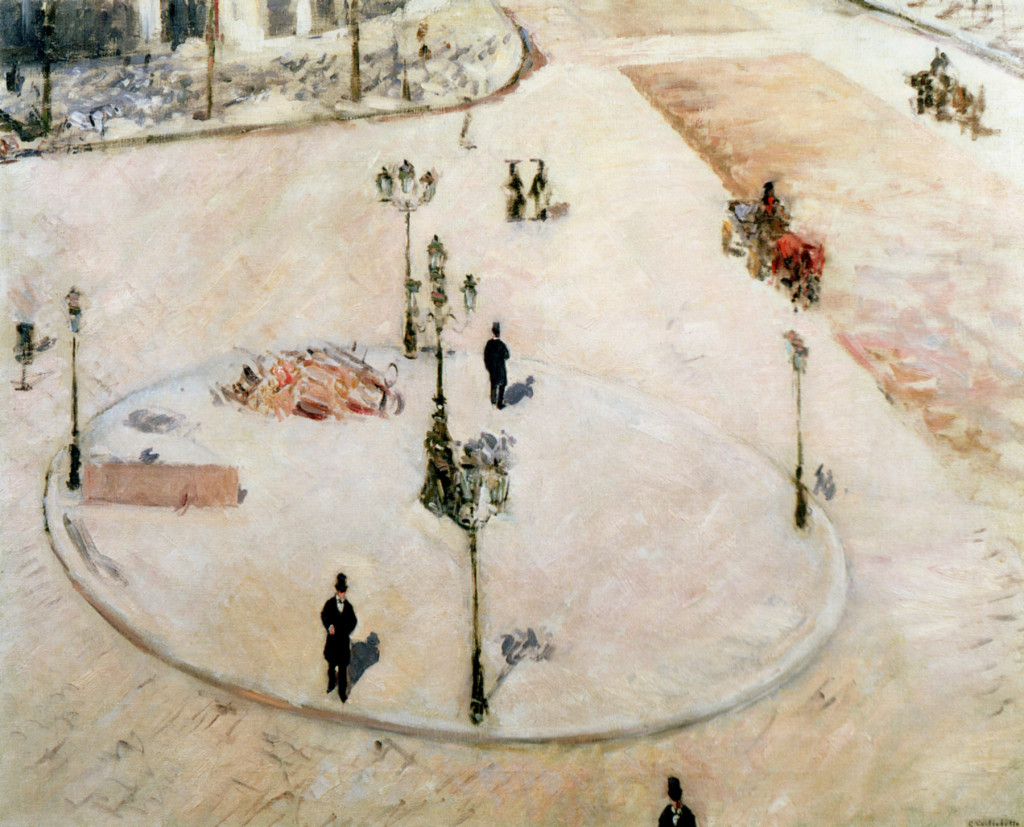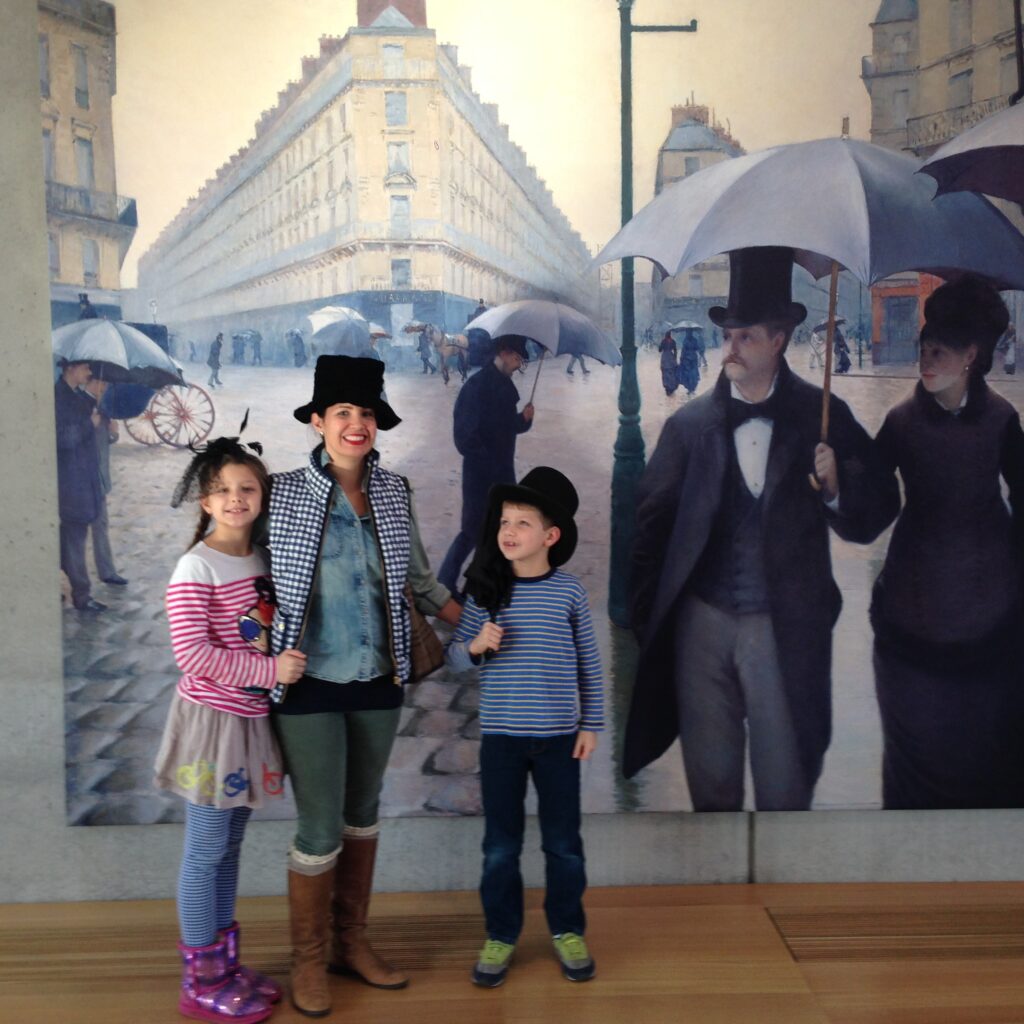It’s a guarantee that when we are on a holiday, we will visit the museum. There are always a few paintings that make you want to step into the picture. When you go to the museum with children, it’s nice for them to be the leaders and see what paintings they would like to step inside of.
We seemed to agree that The Floor Scrapers, Traffic Island, Boulevard Haussmann and Paris Street: Rainy Day were three that pulled us in…making us wonder and feel like our holiday was in Paris (if only for the afternoon). Gustave Caillebotte: The Painter’s Eye at the Kimbell Art Museum in Fort Worth was a treat to see. Caillebotte’s paintings make the viewer wonder what it is we’re looking at, what we’ve decided we see, and why…
Do you know how to say Caillebotte? The Kimbell created this fun video…see if you’re right!
Here are three Gustave Caillebotte paintings that will make you wonder…
The Floor-Scrapers
1875
The Floor Scrapers demand the viewer’s attention…showing a dramatic perspective. Look at the splayed stripes of the wooden floor being so laboriously scraped. Caillebotte visually drops the bare-chested workers right in the viewer’s lap. It’s a painting of three laborers at work preparing his first studio. It was in what was then the relatively new neighborhood of the 8th arrondissement, where Caillebotte’s father had bought. It’s an odd subject matter…very different from his Impressionist friends, Monet and Renoir. His colleagues invited him to participate in their 1876 exhibition. He chose to submit The Floor Scrapers, and it was very popular…viewers either adored it or hated it, but everyone was talking about it!
A Traffic Island, Boulevard Haussmann
1880
Caillebotte’s Traffic Island is an aerial painting that captures a sensible and controlled environment. This is a true impression of a Paris street with people in isolation going about their everyday routines and repetitions. It might remind the viewer of Degas’s Place de la Concorde (1875) the way that you see these people going about their day as if the viewer were “people watching”…they both have a serene quality. Views like this one could only be afforded by buildings that were ten stories or higher…Caillebotte was one of few painters who could afford the view.
Paris Street; Rainy Day
1877
This is a painting about intersections…working class and upper class mixing together in modern Paris. The Parisian bourgeoisie cross in and out of the picture on this Right Bank drizzle-slicked street. Caillebotte steals the limelight from Claude Monet and Auguste Renoir during this time because he created this glowing light that the great Impressionists were trying to capture. Sadly, Caillebotte was never considered a true member of the inner circle of the Impressionists…lacking the easy brushstrokes and sunshine scenes with people interacting. Instead, Caillebotte tells us two things we know about Paris (then and now)…the sky is usually grey and fashion is black.
Gustave Caillebotte had a short career: born in 1848, he didn’t start painting until his late twenties, and he was dead from a stroke by the age of forty-five. Upon the death of his father (who had much success on the Paris real estate market) Gustave inherited a hearty fortune. The cash meant that Caillebotte could work at his own pace, selling almost nothing; the large majority of his art still belongs to his successors. He never needed to work for a living, and never married or had a family. He painted current, in the moment surroundings…gardens, river boating, and his father’s country house. This is why he is one of the most modern of the Impressionists.
All three paintings are remarkable for plunging perspectives for children and a sense of contiguity. Step inside Gustave Caillebotte: The Painter’s Eye…it’s an air of modernité.
Related posts:
Botticelli to Braque…with children
Dega and Pollock…with children








 Many happy returns Pebbles!
Many happy returns Pebbles!